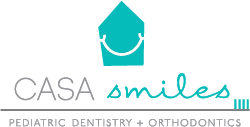- Can I use money from my flexible spending account (FSA) to pay for orthodontic treatment?
Yes, you can use flexible spending account (FSA) funds to pay for part or all of your orthodontic treatment. If you have insurance, an FSA can bridge the gap to pay what insurance does not cover. If you do not have insurance, an FSA can be used to pay the entire fee (up to the annual cap of $2,500 that took effect January 1, 2013). FSAs are generally offered as part of an employer’s “cafeteria plan.” If you do not have an FSA, check with your employer about offering this tax-advantaged benefit.
- If my teeth have been crooked for years, Why do I need orthodontic treatment now?
There’s no time like the present, and healthy teeth can be moved at any age. Orthodontic treatment can create or restore good function, and teeth that work better usually look better, too. A healthy, beautiful smile can improve self-esteem, no matter your age.
- Do I need to change my oral hygiene routine during orthodontic treatment?
Yes, keeping your teeth and braces (or other appliances) clean requires a little more effort on your part. Your orthodontist will explain how to brush and floss, how often to brush and floss, and give you any special instructions based on the kind of orthodontic treatment you are having. Be sure to follow your orthodontist’s dental hygiene prescription to get the best results possible. Check with your orthodontist about dental products and tools that might be helpful. In general, patients with braces must be careful to avoid hard, sticky, chewy and crunchy foods. They should also avoid chewing on hard objects like pens, pencils and fingernails. And never chew ice. It’s much too hard on your teeth – even without braces. Also be sure to see your family dentist for a professional cleaning and check-up at least every six months during your orthodontic treatment, or more often, if recommended.
- I see ads for perfect teeth in only one or two visits to the dentist. How is orthodontic treatment different?
The ads you are seeing may be for veneers. They cover crooked teeth and mask the problem, but do not address the structure in the mouth or how the upper and lower teeth meet. Veneers are not permanent. Many require removal of significant amounts of tooth enamel. If plaque collects where the veneer and the remaining natural tooth meet, the area will be susceptible to what is known as “recurrent decay.” Orthodontic treatment is far more than simply treating how teeth look. It’s about aligning teeth and jaws so that they meet and function effectively. It just so happens that when teeth and jaws are functioning well, they look good, too.
- What are my options if I don't want braces that show?
Should your case warrant it, you might want to ask your orthodontist about lingual braces, which are attached behind the teeth. Ceramic braces may be another option to lessen the visibility of braces; they blend in with the teeth for a more natural effect. Additionally, the use of a series of clear aligner trays (invisible braces) instead of traditional braces may be used to correct some problems. Talk with your orthodontist about less visible treatment options that will help you reach your treatment goals.
- I am pregnant and want to begin orthodontic treatment. Is this OK?
Discuss this question with your OBGYN/physician/healthcare professional and orthodontist before you start any orthodontic treatment, as pregnancy brings on bodily changes that may affect the mouth. Soft tissues such as gums become much more susceptible to infection.
- Can I play sports while wearing braces?
Yes, but make sure you wear a protective mouth guard. Ask your orthodontist to recommend the right kind of mouth guard while you are having orthodontic treatment. Keep your smile beautiful after treatment and wear a mouth guard at every practice and every game.
- Can I play musical instruments while wearing braces?
With practice and a period of adjustment, braces typically do not interfere with the playing of wind or brass instruments.

